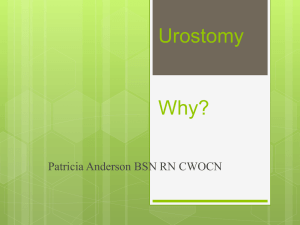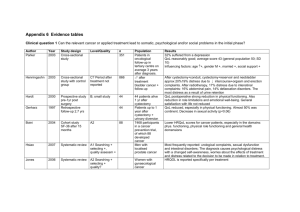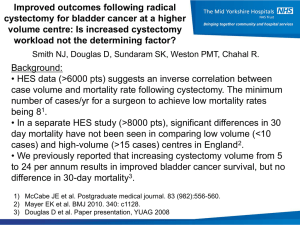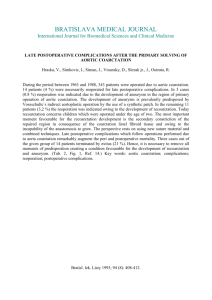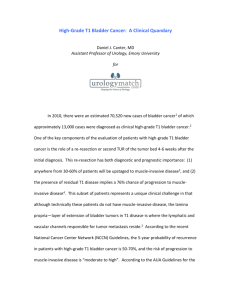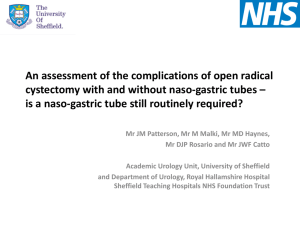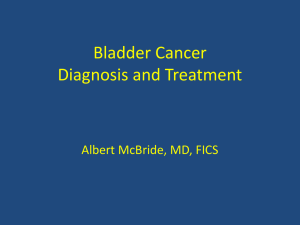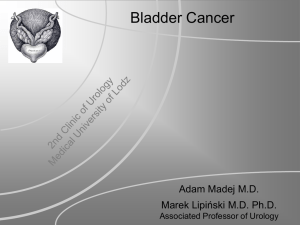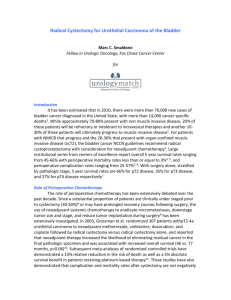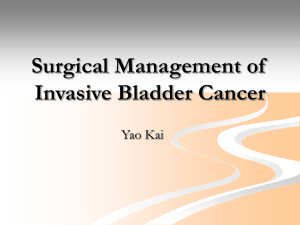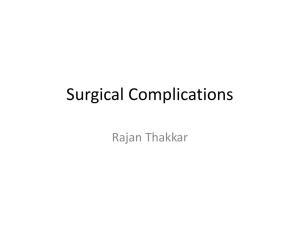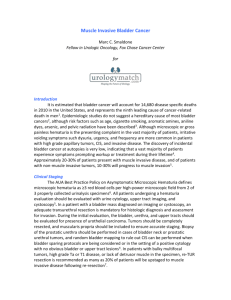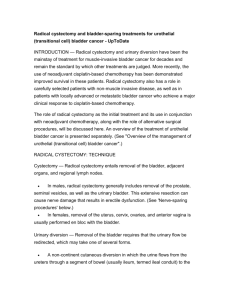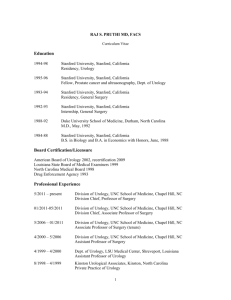Radical Cystectomy in patients over 70
advertisement
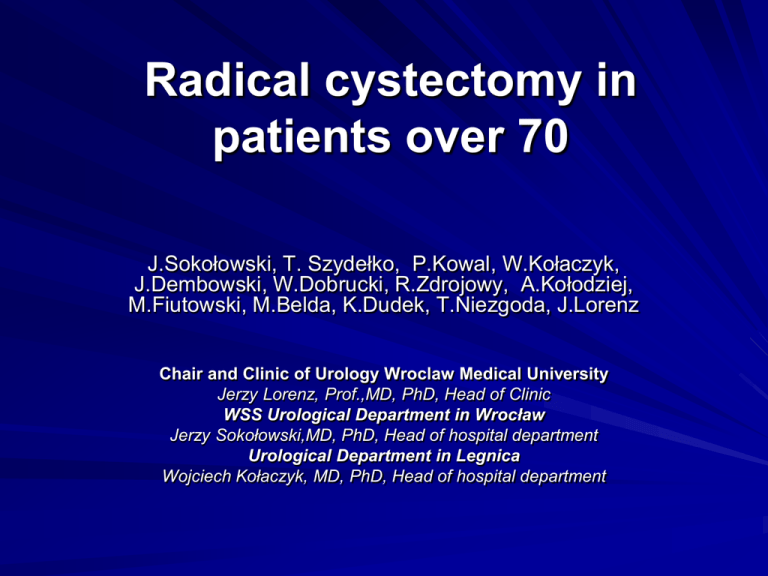
Radical cystectomy in patients over 70 J.Sokołowski, T. Szydełko, P.Kowal, W.Kołaczyk, J.Dembowski, W.Dobrucki, R.Zdrojowy, A.Kołodziej, M.Fiutowski, M.Belda, K.Dudek, T.Niezgoda, J.Lorenz Chair and Clinic of Urology Wroclaw Medical University Jerzy Lorenz, Prof.,MD, PhD, Head of Clinic WSS Urological Department in Wrocław Jerzy Sokołowski,MD, PhD, Head of hospital department Urological Department in Legnica Wojciech Kołaczyk, MD, PhD, Head of hospital department Radical cystectomy is recognized as the golden standard in the treatment of invasive bladder tumours. Cystectomy is a massive and technically hard operation that bears a high risk of early and postoperative complications. Thus the specification of particular indications and contraindications related to this procedure appears to be tremendously important. The age of the patient is one of the factors that may have an influence on the safety of intervention. There are many distempers of intra-systemic balance in patients over 70. Mainly, they are related to : cardio-vascular system respiratory system endocrine system alimentary system. The authors were trying to answer the question whether the age of the patient who underwent cystectomy because of bladder cancer is a crucial factor that has an influence on the safety of the very intervention and the number of postoperative complications. The age of 70 was agreed to be the bordering measurement taking into account that the changes of the functioning of cardio-vascular, respiratory, endocrine and alimentary systems are vividly increased at this age. Since 1996 till 2002 600 radical cystectomies because of bladder cancer were carried out in : Clinic of Urology of Wroclaw Medical University WSS Urological Department in Wrocław Urological Department in Legnica. The results of the treatment of 127 patients were analysed. All the interventions were performed with the same operative technique. Patients were divided into two age groups: 70-75 year olds (90 patients - 71%) and over 75 (37 patients - 29%). The health condition of 54 patients was estimated according to the scale of American Anaesthesiology Association (ASA). ASA 1/2 2 patients ASA 2 23 patients ASA 2/3 6 patients ASA 3 18 patients ASA 3/4 4 patients ASA 4 1 patient In 81 (63%) patients an attempt was made to save the bladder before finally cystectomy was decided on. Methods of treatment before cystectomy. TUR-BT MVAC RTG - therapy OER (open electroresection) PBR (partial bladder resection) 1x – 33 patients 2x – 15 patients 3x – 11 patients more than 3x – 8 patients 7 patients 4 patients 2 patients 1 patient Stage of the disease T0 T1m T2a T2b T3a T3b T4 Total 1 patient 7 patients 7 patients 15 patients 19 patients 36 patients 48 patients 127 patients Methods of urinary diversion. Bricker operation Ileal neobladder Transuretero-ureterostomy + nephrostomy Ureterocutaneostomy Mainz pouch II Bilateral percutaneous nephrostomy Transureteroureterocutaneostomy 46 patients 27 patients 28 patients 18 patients 3 patients 2 patients 3 patients Results All the patients survived the operation The average time of the operation was 4 hrs. 50 min. The loss of the blood during the intervention was, on average 1100 ml Intraoperative complications Rectum injury 2 patients Massive bleeding 4 patients Early complications after cystectomy. eventeration 10 patients bleeding 2 patients ileus 1 patient peritonitis 3 patients necrosis of ureterointestinal anastomosis pelvic abscess 1 patient lymphorhoea 5 patients pneumonia 6 patients 1 patient Early complications after cystectomy. thrombophlebitis 3 patients urinary fistula (leak of anastomosis) respiratory failure 2 patients cardiac infarct 4 patients pulmonary embolism 1 patient Total 36 patients ( 28% ) 3 patients Early complications after cystectomy. The first age group 22 patients The second age group 14 patients Reoperation was required in 18 patients 8 patients died after the operation ( 6,2% ) Heart infarct 4 patients Pulmonary embolism 1 patient Pneumonia 3 patients Late postoperative complications 20 patients The first age group 13 patients The second age group 7 patients Reoperation was required in 14 patients Because of cancer advancement 25 (19,6%) patients died during the first 12 months of the postoperative period. 21 more patients died the following year. Conclusions The analysis of 127 cases of cystectomy performed in patients over 70, has led us to the conclusion that the method remains an effective treatment of invasive cancer even though the number of complications in that age group is higher than in younger patients. Conclusions The risk of complications occurence rises with the age of the patient and is considerably higher in patients over 75.
